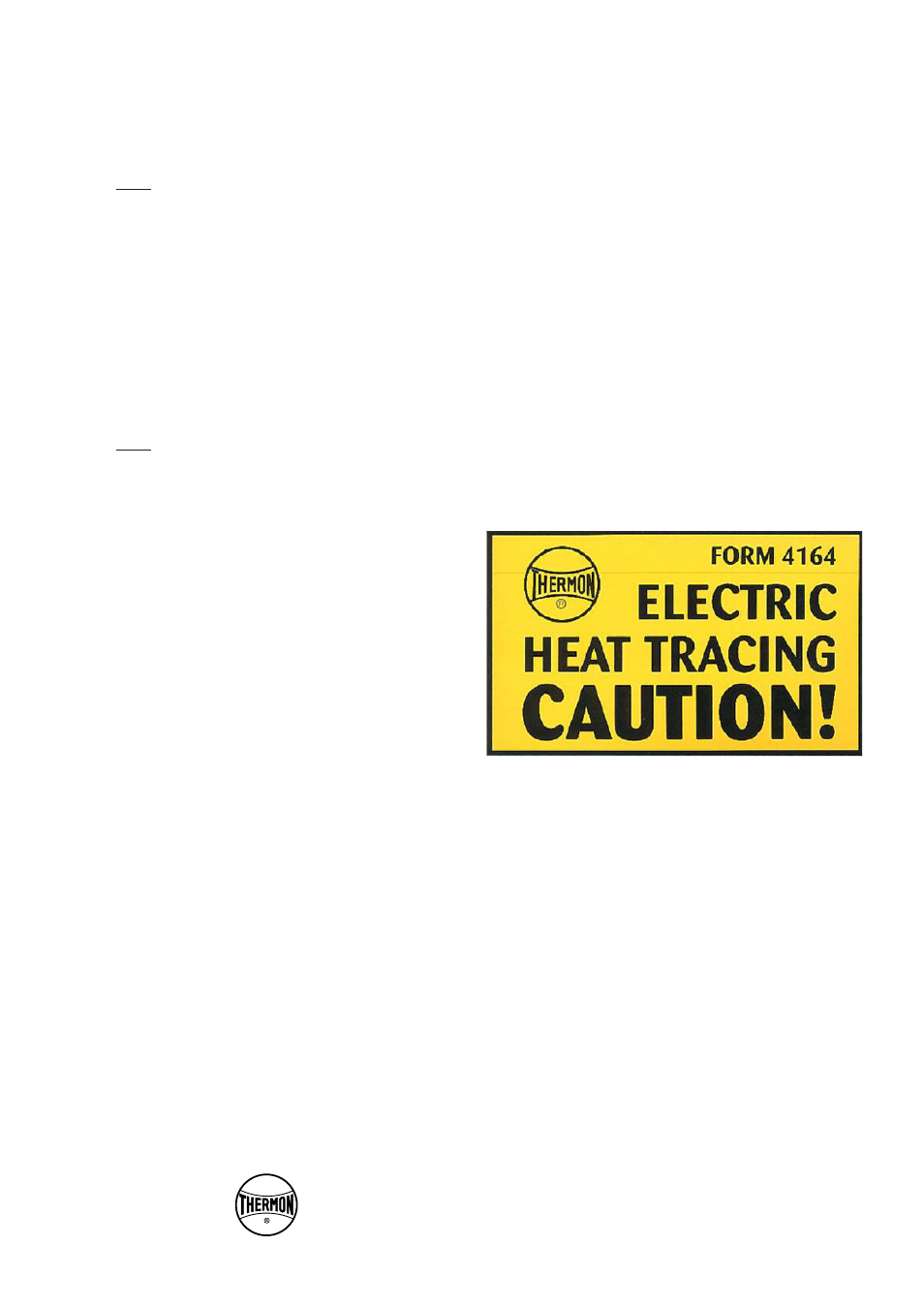Installation sequence of a heat tracing system – Thermon TESH User Manual
Page 7

INSTALLATION GUIDELINES SERIES HEATING CABLES
PAGE 5
THERMON...The Heat Tracing Specialists
®
TEP0118U-1111
Set the thermostat (if applicable) at the desired
17.
temperature and note down the setting in the checklist
(page 23). We recommend, in case a thermostat
controller/limiter is mounted to the pipe, to mark the
controller knob with C and the limiter knob with L, by
means of for example a permanent marker.
Make sure that all openings in the junction boxes and/
18.
or thermostats are closed so that no moisture can
penetrate.
After the thermal insulation has been mounted, the
19.
heating cable must be inspected, meg gered and the
loop resistance must be measured again (page 22).
Note down the readings in the checklist (page 23).
Apply caution labels to insulation weather barrier at 3
20.
meter intervals.
Installation sequence of a heat tracing system
Note:
Stainless steel tie wire for MI cable to be supplied by
electrical contractor.
Ensure that the heating cable is mounted on the pipe
at the right location (see page 11). The heating cable
is to be fixed to the pipe every 300 mm by means of
fixing tape or SS tie wire. If plastic pipes are traced, the
heating cable must, after having been fixed to the pipe,
also be covered with aluminium tape. If the plastic pipes
have a low temperature resistance, the pipe must be
wrapped with aluminium foil before the heating cable is
mounted.
Note:
Do not overtighten the SS tie wires around the MI
heating cables. The SS tie wires should be tightened
in such way to permit hand movement of the cable
between tie wire and the pipe, but not to allow the cable
to move freely under its own weight. This is essential as
it permits for movements of the cable during its heating
cycle, when otherwise restricted movement can lead to
cable failure due to fatigue.
Ensure the correct amount of cable is allowed on
11.
locations where additional heat losses can be expected
(such as pipe supports, flanges, valves, instruments
etc., see page 12 and further). The heating cables may
never touch or cross one another.
In case the heating cable cannot be terminated at once,
12.
the heating cable's ends must be sealed off temporarily
with for example some RTV-2 silicon sealant.
If applicable, connect a cold lead cable to each end of
13.
the heating cable.
Protect the heating cable against damage at those
14.
locations where damage could typically occur (at
insulation end plates at valves, pumps etc, see page
21).
Inspect, megger and measure the loop resistance of
15.
the heating cable again before thermal insulation is
installed (page 22) and note down the readings in the
checklist (page 23).
Note down the actual installed length of heating cable in
16.
the checklist (page 23) and/or isometric.
